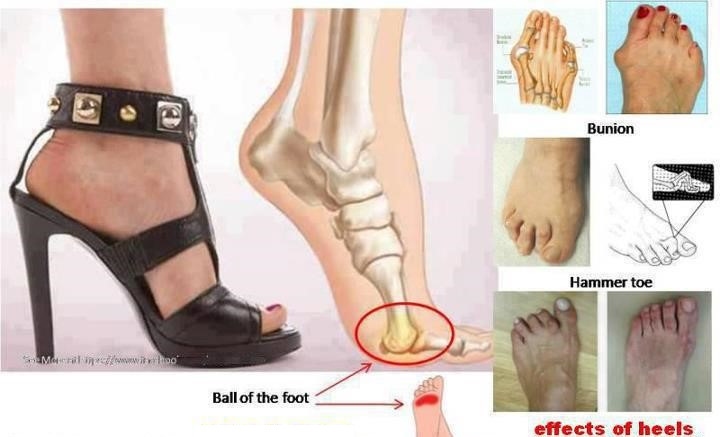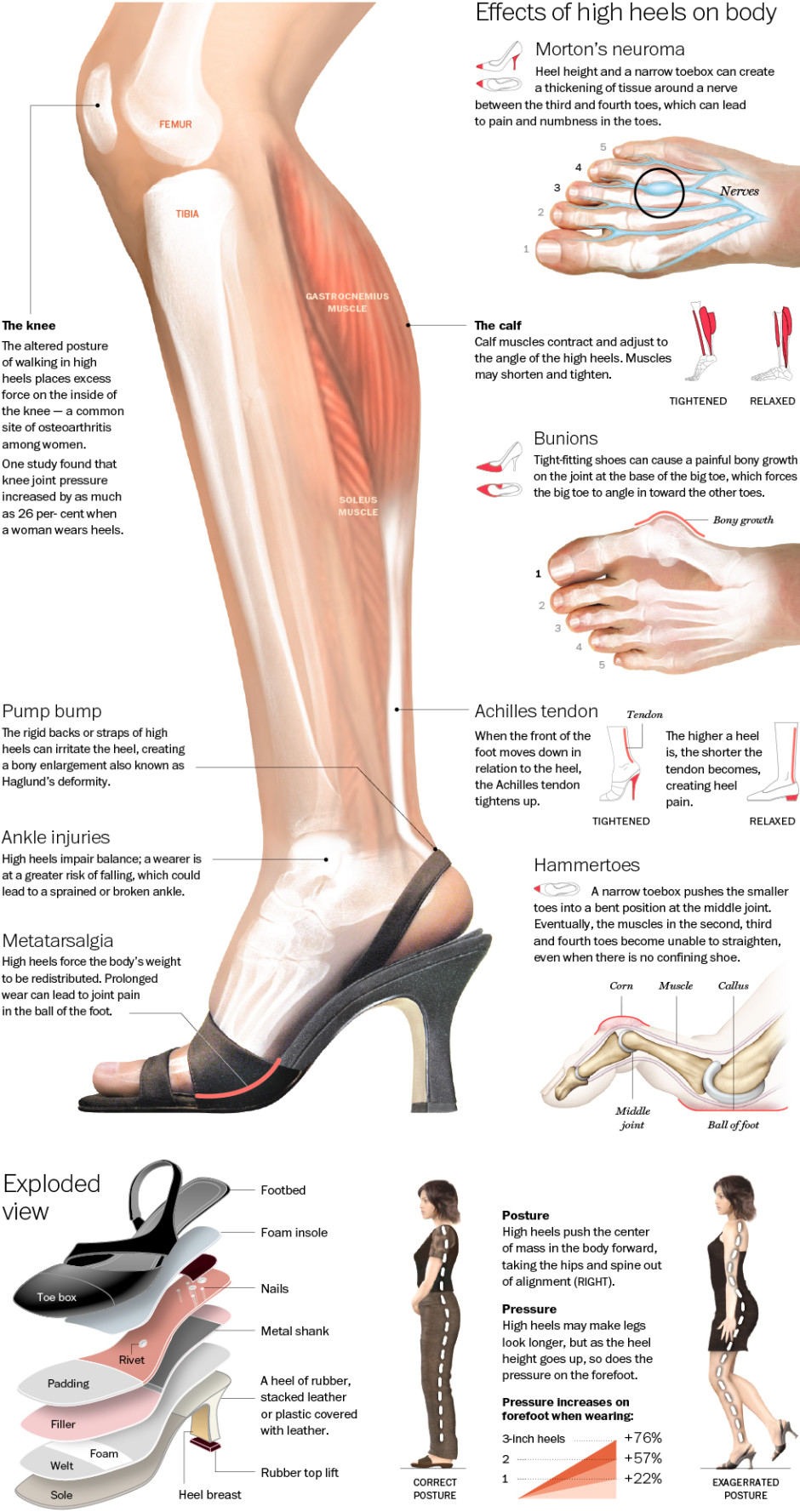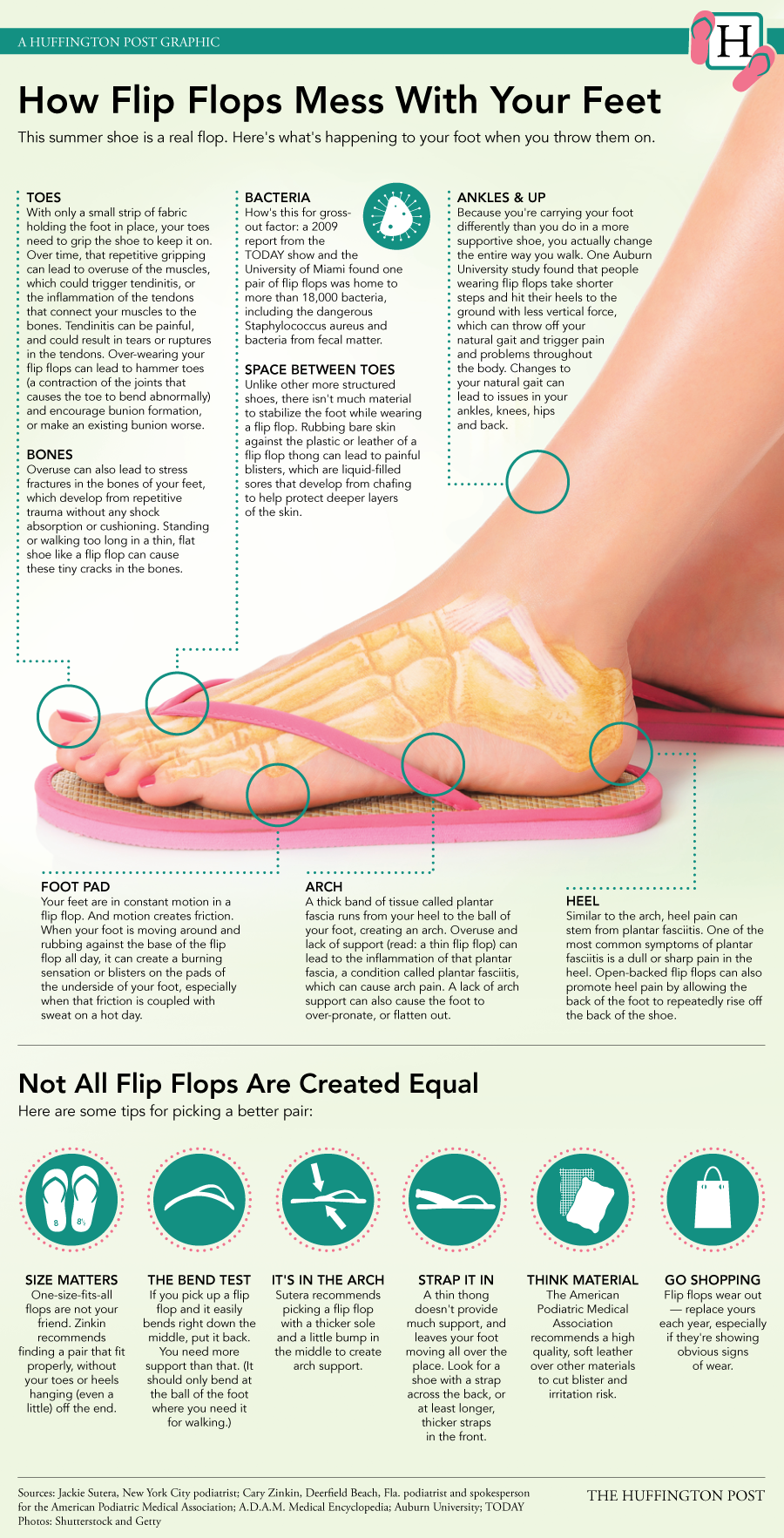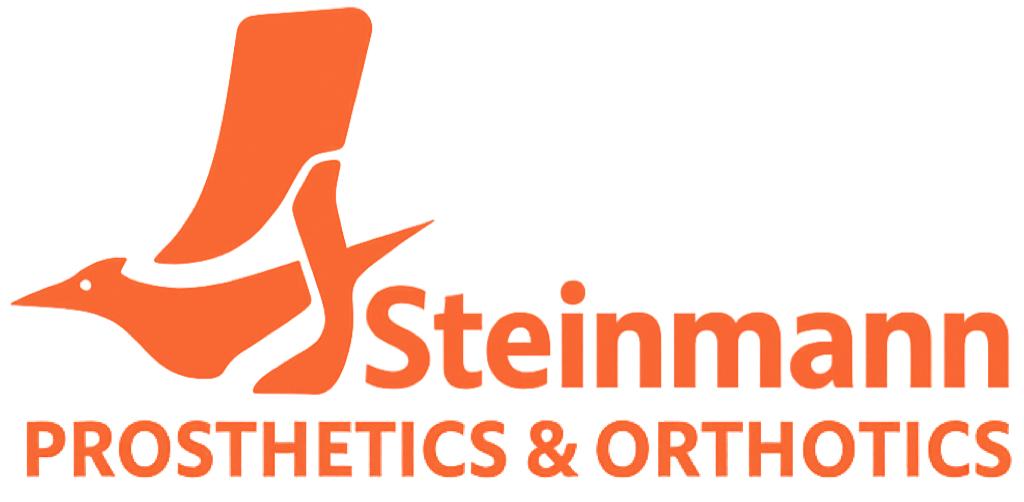25% of all your bones are located in your feet and ankles; each foot has 26 bones and 33 joints.
Your feet are the foundation of your body and carry all your weight. Poor footwear can damage your foot structure or aggravate existing problems, such as plantar fasciitis, bunions, or hammmertoe. It can even affect the all-important Calf Muscle Pump, sometimes referred to as the 2nd Heart.
Common foot problems
Plantar fasciitis: inflammation in the ligament that runs along the sole of your foot. The ligament attaches to the bottom of your heel bone, which is why the pain is often felt in the heel.
Bunions: a condition where the metatarsal bones are displaced, causing the big toe to lean toward the other toes; it results in a “bump” at the big toe base causing the forefoot to widen.
Hammertoe: a bending of either one or both joints of the metatarsals (second, third, fourth, or little toe).
Venous insufficiency, varicosities, edema: wearing high heels has been shown to interfere with the Calf Muscle Pump, which returns venous blood from the lower extremities to the heart; ineffective pumping action may cause vascular concerns.
Foot exercises
Heel lifts to strengthen medial arch muscles: while seated lift your heel, hold 10 seconds, then lower, and repeat.
Tennis ball massage to stretch the plantar fascia: while seated, roll a tennis ball back and forth along your foot from toes to heel.
Toe grips: drop a sock on the floor and use your toes to grip and lift it off the floor; hold 10 seconds, release, and repeat.
Toe extensions: wrap an elastic band around all five toes; expand your toes and hold 5 seconds, release; repeat 5 times each foot.
Calf raise: stand near a counter or doorway and hold on for balance; balance on one foot; rise up onto your toes, hold 10 seconds, then lower, and repeat.
Calf-strengthening exercises can improve calf muscle pump function:
- walking, toe-walking, calf raises, lunges, or foot pumps (flexing the foot and ankle)
- a foot stepper machine simulates walking and may be used while sitting
After exercising your feet, try a frozen golf ball massage: simply pop a ball in the freezer for a few hours, then roll under each foot while sitting down; the icy, textured hard ball can massage the tiny muscles of the foot.
Effects of poor footwear



References: Calf-muscle pump. Tedeschi-Filho, W., et al. J Vasc Surg, 2012.
The infographs are from the web, with thanks to their creators.
Typically Recommended Footwear for Diabetic and Orthotic Needs
Choosing the right footwear is a critical part of protecting foot health, especially for patients with diabetes, foot deformities, or those who wear orthoses. At Steinmann Prosthetics & Orthotics, we work with trusted brands to provide both insurance-covered and out-of-pocket solutions tailored to our patients' needs.
Therapeutic Footwear (May be Medicare-Covered)
For patients who qualify for Medicare-covered therapeutic shoes (HCPCS code A5500), we primarily dispense shoes from the following suppliers:
These brands are known for their supportive, adjustable designs and compatibility with custom inserts. If you are eligible for therapeutic footwear, our team will assist you with fittings and guide you through the insurance coverage process.
Adaptive Footwear for Everyday Use
We also recommend Billy Footwear as a helpful solution for children and adults who wear AFOs or other braces. Billy Shoes feature a zip-around design that makes it easier to put shoes on and take them off over orthotic devices.
Shop Billy Footwear – Get 10% Off
Note: We may earn a small commission from purchases made through the link above. This does not affect your cost or our clinical recommendations. Billy Footwear is not part of our Medicare-covered therapeutic shoe program.
